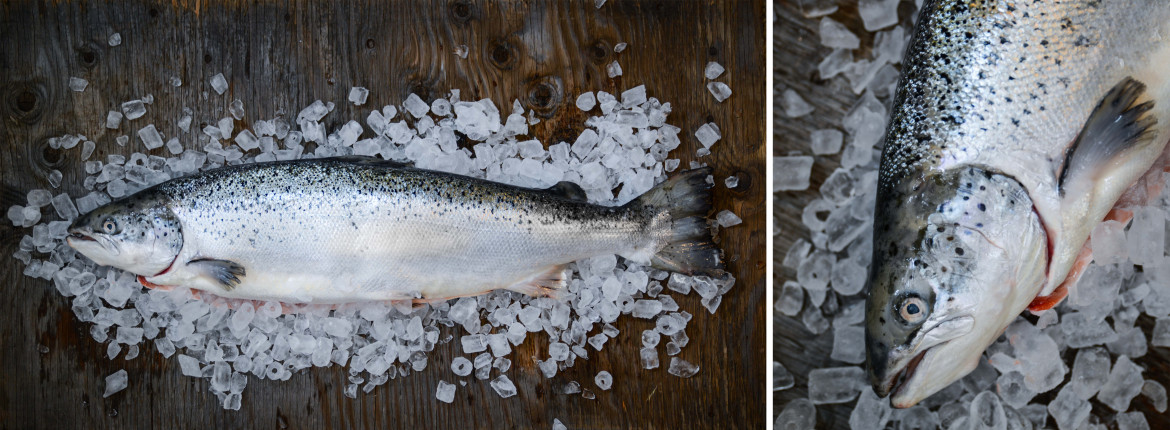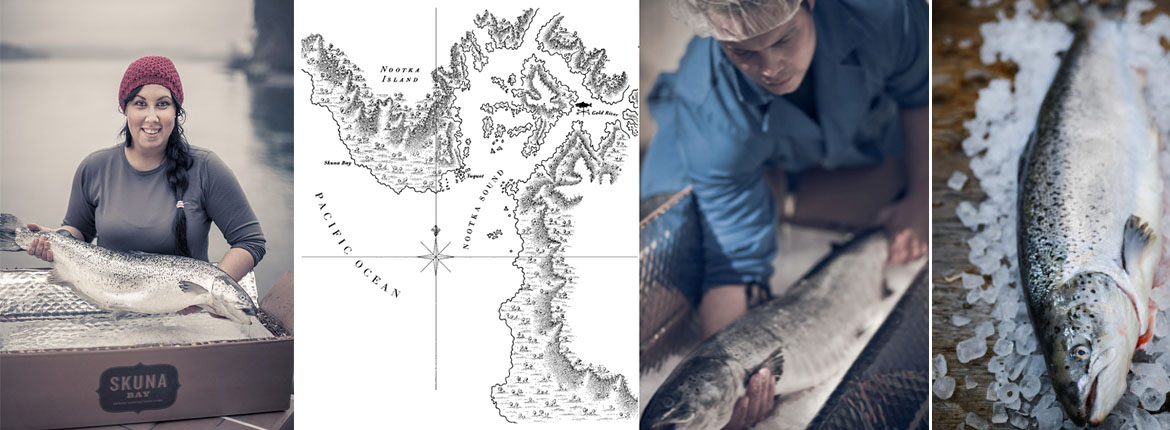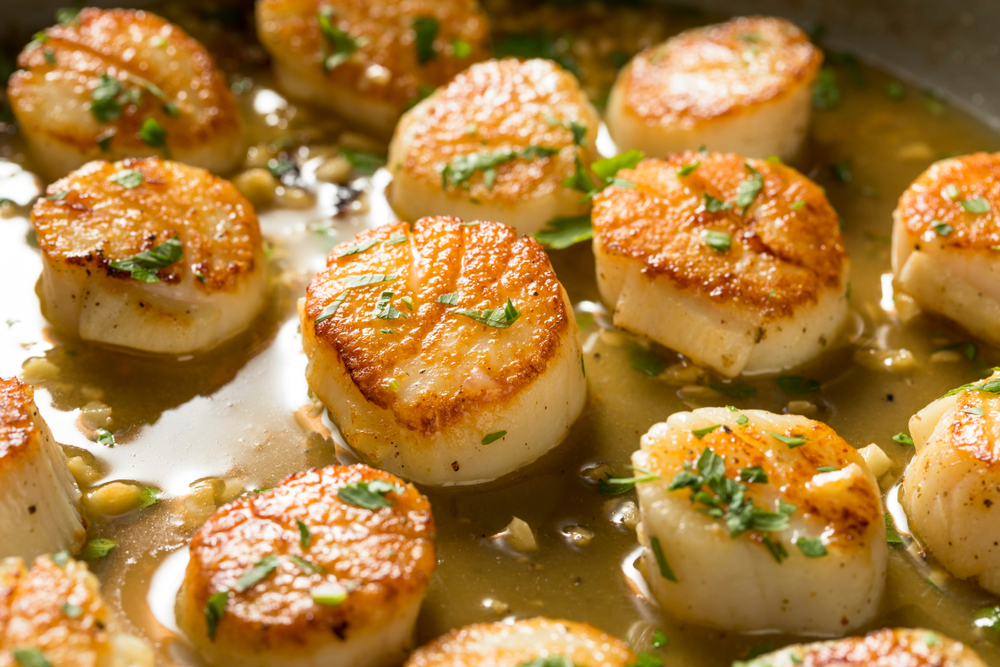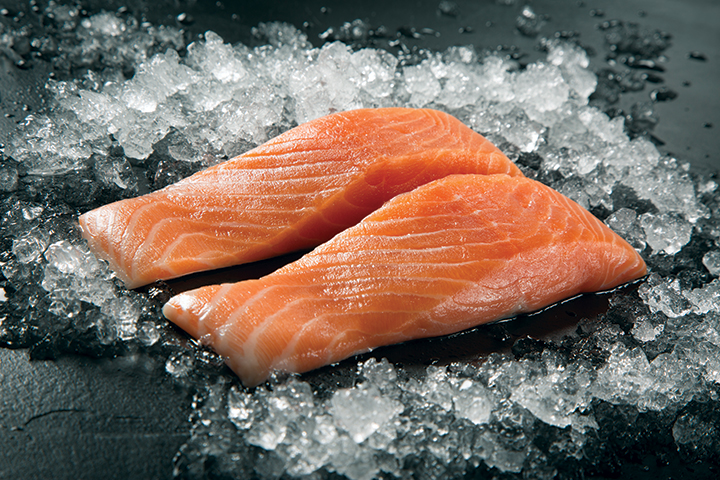SALMON/TROUT
Atlantic salmon prices are starting to show strength for the first time this summer. Chile is seeing slower production, another holiday slowdown, and higher demand, pulling costs upward. Some retailers are pulling wild ads in favor of farmed-raised salmon with the volatility of summer sockeye catch. Setting advance retail ad pricing for wild salmon has been a crap shoot, at best. European markets are up following the Norwegian NOK, which crept over the 50 mark this week for bigger fish. Generational rollover is creating an abundance of smaller fish in the 3-5 kg. size. Nothing special is occurring in the market to elevate prices; there is simply a shortage of larger sizes, increasing costs. Our Scottish premium markets are facing similar issue with fish sizes. Three to four large seafood containers arrive weekly to Denver carrying superior Scottish and Norwegian salmon direct from the farms.
Predicted large harvest of wild Alaska salmon has not materialized thus far this season. Since the Copper River opener in Mid-May, sockeye have been elusive. Only once this season has there been enough volume to drive prices down, but the fishery has tightened once again to reverse the downward trend. Coho salmon has shown up in Snow Pass, Alaska, but Cook Inlet and Southeast regions have been somewhat stingy. We will likely see the pre-season sockeye numbers reduced as a result of the early catch. We are hoping to see ample coho supply from Yakutat and Copper River next month. The coho season should stretch well into the fall. The king season has been adequate to date with favorable pricing, filling some of the gaps for retail markets. Foodservice accounts lean toward the large chinooks, needs covered with recent Alaska openers.
Ever popular on summer menus, farm-raised trout is our specialty. Red meat trout is a bit tight, but are supplemented from our red trout growers in neighboring Utah. Rainbow trout comes in your size and specification. Pin-bone out fillets, dressed, boned; whatever your pleasure, Seattle Fish Co. supplies. Don’t forget about our Loch Etive Scottish Steelhead trout direct from Northern Argyll on the west coast of Scotland. Fatty steelhead on the barbie, seared rare; hard to beat.
CATFISH
U.S. farm-raised catfish is fully sustainable, tastes great, and is in plentiful supply this summer. Our catfish farmer partner carries the only BAP (Best Aquaculture Practice) certification in the United States. Vertically integrated, they do it right and produce the finest catfish in the country. Great for your summer menu or retail case, farm-raised catfish is the ticket.
WEST COAST
The Alaska halibut market hit a speed bump last week with very tight supply, leaving some customers wanting for their favorite white fish. Many vessels targeting salmon and dicey weather combined to create the shortfall, but it should be back up to par this week. We are starting to see a greater amount of chalky halibut, a problem affecting quality. Chalky halibut is not harmful, but it turns the meat white instead of its usual translucent appearance. Chalkiness has been directly associated with a buildup of lactic acid resulting in lower pH in post mortem flesh. Chalky halibut is not harmful to eat, and in fact eats well, but is certainly not marketable as a premium fillet. We freeze and glaze chalky halibut, offering a perfect product for halibut fish and chips or tacos at a very favorable price. Ask your sales rep for details on frozen chalky halibut. Northwest ground fish has been scarce, especially for shallow water dover sole and pacific cod. Rock is generally available from Canadian and southern U.S. waters. Also limited is arrow tooth flounder and perch. Filling the dover sole gap this week is petrale, with good supply and very reasonable pricing. Petrale fishing is coming from southern Pacific regions and more favorable fishing conditions. Most of king crab production is coming from Russian waters. The quota is up slightly from 2015. There have been reports of IUU (Illegal, Unregulated, Unreported) catch coming from Russia. All king crab sourced by Seattle Fish Co. from Russian waters come with full reported catch documentation. Our supplier is also engaged in a Fishery Improvement Project. With Korea and China heavily involved in the live market with king, Dungeness, and snow crab, demand is firm, causing prices to escalate.
King salmon fishing in central California has been short, with most king salmon supply coming from Alaskan waters. Further south, California and Baja waters are yielding grouper and baquetta along with California halibut, yellowtail jack, and Mexican snappers. Urchin fishing off Cabrillo Point in San Diego is good. The popularity of live urchin is growing in the Denver market, as is processed uni. This region arguably produces the finest uni in the country. The Baja bay scallop fishery is a non-event this year. The Mexican government may close scallop fishing as a result of low production. Shrimp production in Mexico is virtually over, with the new season beginning late September. Globally, shrimp imports were down in June for the first time this year. Prices continue to trend down on small sizes, but steady on the larger shrimp. On the domestic scene look for good supply of rock shrimp, and ask your rep about our all-natural 21-25 and 16-20 shell on domestic shrimp.
EAST COAST
As reported, the wild stripe bass season is open; good news. The bad news is that the catch last week was low, demand screaming, leaving prices soaring. Hopefully we will get a reversal later this week. Ground fishing continues to be limited to dabs and haddock. The cod fishery, once a New England mainstay, is now a shadow of its former self. Much of our cod production is coming from Iceland. Monkfish supply is OK, but much of the production is coming from scallop boats, with draggers producing less than desirable quality. We source our monk from set line fishery. Squid, another solid East Coast staple, is seeing more limited supply, a result of the very harsh winter in the Northeast. Commitments from our longtime squid processors should keep us relatively flush for this favored mollusk. We have passed the first quarter of the scallop season, and prices are reasonable for smaller sizes, staying firm on larger scallops. Foreboding clouds may be coming with news from Japan, a major driver in scallop prices, the balance of the season. Almost 50% of scallops used in the U.S. come from Japan in frozen form. Major storms last month have depleted as much as 40% of the Japanese scallop beds, taking 2-3 years to replenish. Price increases followed almost immediately, which is sure to effect the domestic market. News from the live lobster market is that June lobster prices are the highest since 2011 as supply concerns mount. Fishermen are waiting for warmer waters to catch up from a late start this season.
SHELLFISH
Twenty years ago, 80% of all oysters sold in the U.S. were shucked; today those numbers are reversed. Such demand has put strain on the system, especially during the summer months. This season on the West Coast is especially difficult with numerous closures, a result of very hot temperatures. New rules for the oyster industry dictate closure if the water temperature is over a certain level, regardless of vibrio detection. Combined with the normal summer spawn, West Coast variety is cut significantly. Even though choices are limited, supply remains good. East Coast is faring better from Maryland to Canada with numerous varieties. Oysters, like fine wine, are to be savored and enjoyed. As one of our oyster friends says, “Buy early, buy often.”
Like everything else in the Northeast, hard shell clams have been affected by the very cold winter. We are getting adequate supply, but balance of the summer catch will be a challenge. Manila clams from the West Coast are weak this time of year. We are buying smaller volume several times a week to keep the clams as fresh as possible. Mussels are also under summer stress, but with proper care and rotation few issues should occur. Keep those mussels well iced and properly drained.
GULF
Tuna boats from our gulf fleet have seen their share of weather and low catch trips, but after a slow week they are showing some signs of better days. We had a short trip vessel in yesterday with a few nice yellowfins along with some by-catch of wahoo and domestic mahi. Swordfish has been steady and the Canadian harpoon season opened. After a decent opening salvo, the harpoon fishery is hitting somewhat of a snag this week. Imports are reasonably priced and quality fish has been available. Gulf snapper boats are turning around, volume is good, and quality excellent from short trip vessels. Our Gulf Wild snapper fishermen tag each fish individually, showing the exact 10-mile radius where fish was caught. Tag numbers, easily pulled up on mygulfwild.com, also give the name of boat and captain. Gulf Wild grouper from Destin, Florida, on the other hand, has been extremely scarce. Mahi has been very tight on the import side, carrying a big price tag. We will have some domestic mahi this week. Summer season and mahi do not mix very well, but we do carry good supply of frozen mahi fillets and portions.
GREAT LAKES
As temperatures warm in the Great Lakes region, walleye dive deeper, making catch more difficult. Volume has been adequate and fish, for the most part, are larger. The frozen market is still tight to nonexistent for marketable-size pickerel. We are looking to get a frozen shipment soon. Whitefish, pike, and some lake perch are also cropping up.
HAWAII
The Hawaiian auction is up and down this time of year; one day over 100,000 lbs., the next 30,000 lbs. Some sword, but more limited than earlier runs, is available; good totals on opah, marlin, and tuna keep the coffers full. Monchong and albacores are also available. Our buyers send daily average prices on the day’s offerings, and we send a buy wish list with pricing parameters. Seasoned buyers then go to work to try and fill our orders. Fish from the auction is packed same day and shipped directly to Denver. Hawaiian Kampachi is steady, no changes. Fish sizes are hitting the 4 lbs. mark. Kampachi is a great summer special. Ask your rep to send you a piece or two today.
Please check out our website for current information and the Wild Salmon Guide to plan your summer menus.





